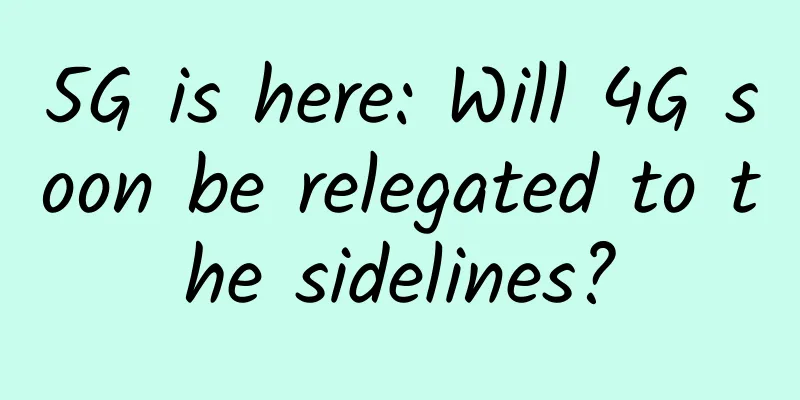If you don’t know IPv6, you are out of date. What is IPv6?

|
When using mobile apps, have you noticed that there is a line of small words at the bottom of the welcome page that says "IPv6 is supported". According to global IPv6 statistics released by Google, as of the end of November 2018, the global IPv6 penetration rate has exceeded 25.04%, while China's IPv6 penetration rate is only 2.93%. In 2019, both operators and Internet companies have begun to popularize IPv6 on a large scale. So what exactly is IPv6?
When talking about IPv6, we have to talk about the IPv4 protocol currently in use. Vinton Cerf, the "Father of the Internet", created the Internet communication protocol "IPv4" in 1977, allowing computers around the world to connect to each other. The IP address is a series of numbers assigned to each computer, website or other networked device, and each IP address is unique. Since the IP address length is 32 bits in IPv4, the rapid development of the Internet of Things has caused the current IPv4 addresses to be exhausted. As of June this year, the number of fixed-line Internet users in my country was 751 million, and the number of mobile Internet users was 724 million, but the number of IPv4 addresses was 338.45 million, and the average number of IPv4 addresses per fixed-line Internet user in my country was only 0.45. Example of the number of IPv6 addresses IPv6 uses a 128-bit address length, which can ensure that more than 1,000 addresses are allocated per square meter on the earth. In addition to solving the address shortage problem once and for all, the design of IPv6 also takes into account other problems that are not well solved in IPv4, mainly end-to-end IP connection, quality of service (QoS), security, multicast, mobility, plug-and-play, etc. At the end of 2018, the General Office of the CPC Central Committee and the General Office of the State Council initiated the "Action Plan for Promoting Large-Scale Deployment of Internet Protocol Version 6 (IPv6)". Almost at the same time, the "Snowman Project" IPv6 DNS system was released, creating basic conditions for IPv6 transformation. In the next 5-10 years, the construction of IPv6 networks will reach a new peak, bringing new business opportunities. Whether it is operators, cloud service providers or enterprises and industry users, in the process of transitioning to IPv6, they will inevitably face the situation of upgrading routers and other equipment. IPv6 upgrades will also bring new business opportunities. |
<<: If you think 5G will solve all your IoT challenges, think again
>>: Wireless WiFi network password cracking attack and defense and principle detailed explanation
Recommend
Let’s talk about the new features of HTTP/3. Why did you choose to use the UDP protocol?
[[399228]] This article is reprinted from the WeC...
Operators push 5G, there are many inside stories about number portability, and 315 regulars will also be on the list
[[387481]] Editor's note: The operators who p...
Enjoy Ruijie's ultra-fast Wi-Fi in all areas when visiting Guizhou Tianhetan
Guizhou Tianhetan Scenic Area is famous for its t...
What role can fiber optic technology play in education?
In the ever-evolving field of education, technolo...
What you need to know about Wi-Fi 7
As Wi-Fi 7 continues to make waves in the technol...
What is the handshake process like when connecting to a host whose IP does not exist?
[[410045]] This article is reprinted from the WeC...
6 SD-WAN Challenges and Benefits
Software-defined WAN (SD-WAN) has obvious advanta...
"Small body but great wisdom" Huawei helps Wanyang digitalize small and micro parks
[51CTO.com original article] How many "chara...
DogYun: San Jose AS4837 line monthly payment starts at 12 yuan, Los Angeles CN2+AS9929 monthly payment starts at 20 yuan
I have shared information about DogYun (狗云) many ...
Net profit increased by 10%: How did China Unicom achieve its goal of implementing three strategies?
2020 is a challenging year, and it has not been e...
Ranking of JavaScript open source projects in September
[[428048]] The ranking of the most popular JavaSc...
It will take time for 5G cross-network roaming to become popular
On May 17, at the opening ceremony of the "2...
[11.11] UUUVPS US VPS annual payment starts from 91 yuan, Hong Kong CN2 annual payment starts from 182 yuan
UUUVPS (Sanyou Cloud) launched the promotion duri...
Free and easy to use! This data recovery software found my video from two years ago
[[400280]] It is raining in Hangzhou today, and S...
The challenges of 5G have just begun
The COVID-19 outbreak that has ravaged the world ...









